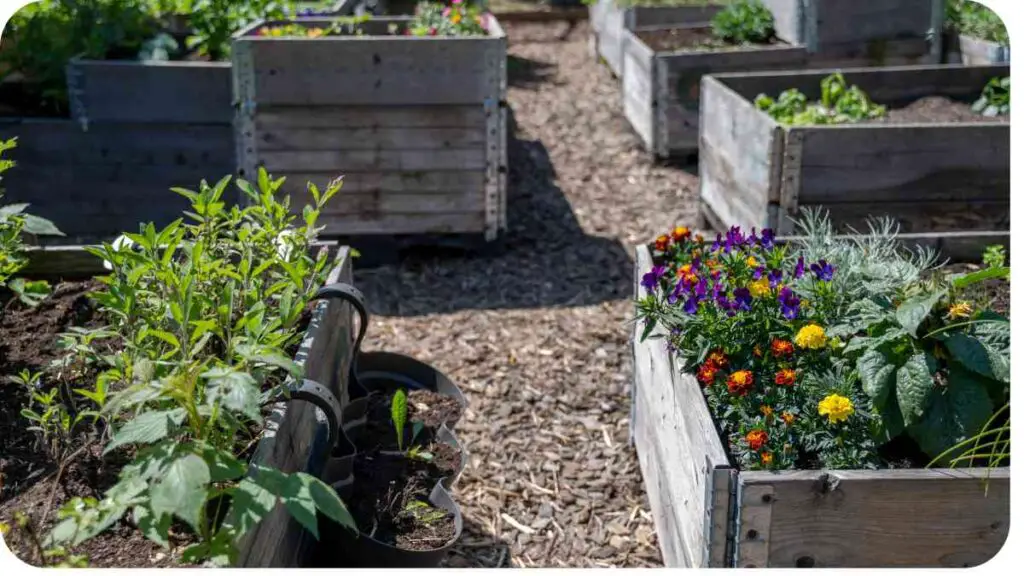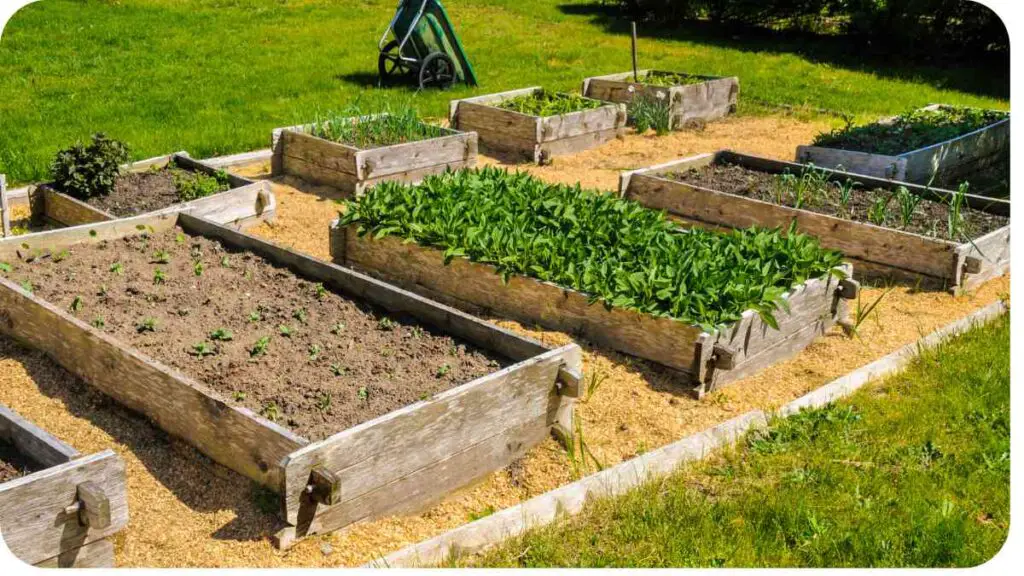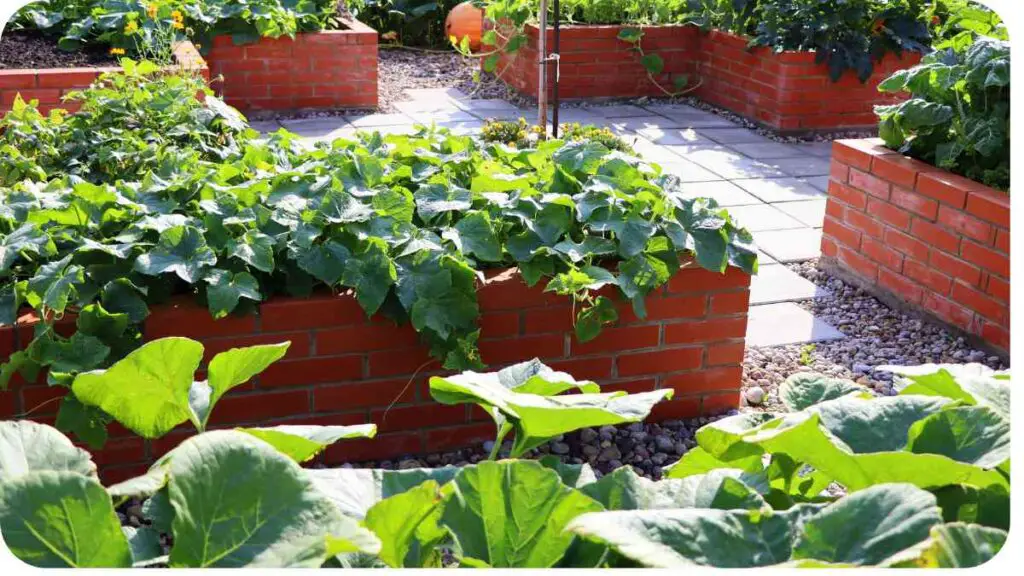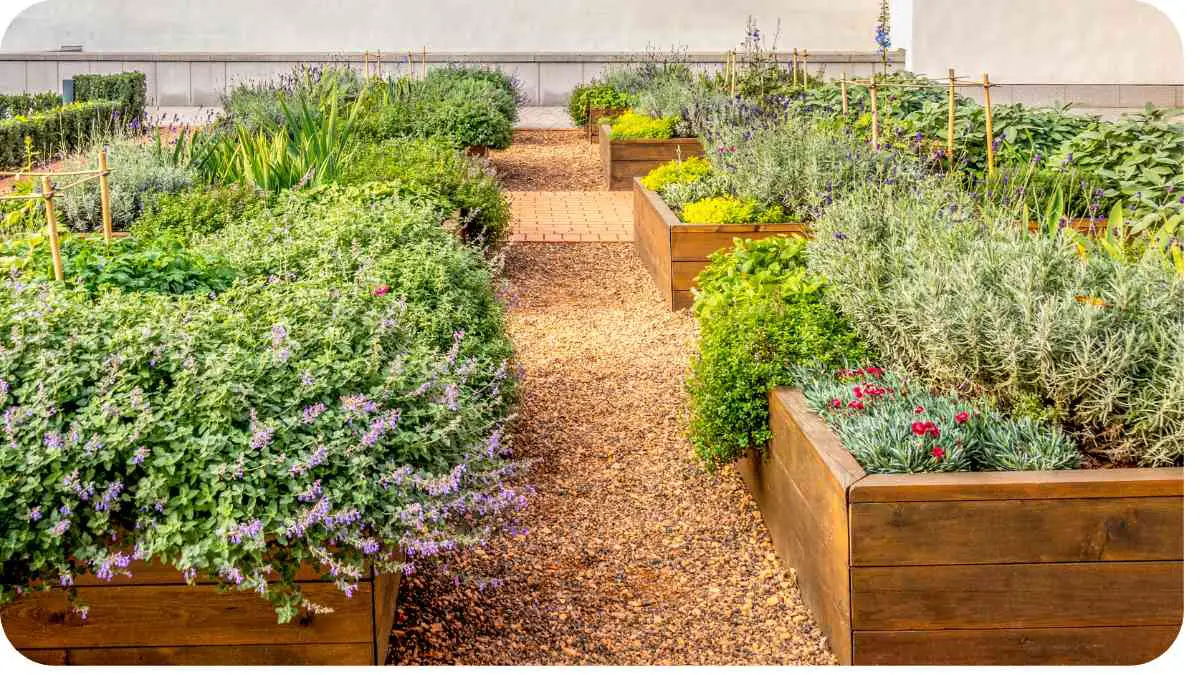Gardening enthusiasts often debate the merits of various planting methods, and one popular technique that has gained traction in recent years is raised bed gardening. But why exactly do gardeners opt for raised beds instead of traditional in-ground planting?
| Takeaways |
|---|
| Raised beds offer numerous advantages over |
| traditional in-ground planting, including |
| improved soil quality, better drainage, and |
| easier maintenance. Consider constructing |
| raised beds to enhance your gardening |
| experience and maximize your plant growth. |
2. Understanding Raised Beds
Before diving into the reasons behind the preference for raised beds, let’s clarify what they are. Raised beds are essentially elevated gardening containers filled with soil that are used for growing plants. They can be constructed from a variety of materials, such as wood, metal, or even recycled plastic.
Understanding the distinction between planting and gardening is crucial. While planting is the initial step, gardening involves ongoing care and management. Learn more about this important difference to ensure successful gardening endeavors.
3. Advantages of Raised Beds

Raised beds offer several advantages over traditional in-ground planting, making them an appealing option for gardeners of all levels of expertise. Let’s compare the two methods:
Table: Comparison of Raised Beds vs. Traditional In-Ground Planting
| Aspect | Raised Beds | Traditional In-Ground Planting |
|---|---|---|
| Soil Quality | Can be filled with high-quality soil mix | Depends on existing soil conditions |
| Drainage | Better drainage due to elevated position | Prone to waterlogging |
| Pest Control | Easier to monitor and control pests | More susceptible to pests |
| Maintenance | Requires less weeding and soil compaction | More labor-intensive |
| Accessibility | Offers easier access for planting and care | Requires bending and kneeling |
4. Improved Soil Drainage
One of the primary reasons gardeners opt for raised beds is the improved soil drainage they offer. By elevating the planting area, excess water can easily drain away, preventing waterlogging and root rot, which are common issues in poorly drained soils. This is particularly beneficial in areas with heavy rainfall or clay soils, where drainage problems can hinder plant growth.
Organic gardening methods play a vital role in enhancing soil health. By employing organic practices, gardeners can foster a rich, nutrient-dense soil environment conducive to plant growth. Explore how organic gardening can benefit your garden’s ecosystem.
5. Better Pest Control
Another advantage of raised beds is the enhanced ability to control pests. Since the beds are contained and raised above ground level, it’s easier to monitor and manage pest infestations. Additionally, physical barriers such as mesh screens or row covers can be installed to deter pests like rabbits, slugs, and snails, providing a protective environment for your plants.
6. Extended Growing Season
Raised beds can also extend the growing season, allowing gardeners to start planting earlier in the spring and continue harvesting later into the fall. The elevated soil warms up more quickly in the spring, promoting earlier germination and growth.
Additionally, raised beds can be covered with protective structures like cold frames or hoop houses, providing insulation against frost and extending the growing season for heat-loving crops.
Compost is a cornerstone of successful vegetable gardening, offering numerous benefits. From enriching soil fertility to promoting plant growth and resilience, incorporating compost is essential. Discover the advantages of using compost in your vegetable garden for bountiful harvests.
7. Accessibility and Ergonomics
One often-overlooked benefit of raised beds is their accessibility and ergonomic design. By raising the planting surface to waist height or higher, raised beds reduce the need for bending, kneeling, and stooping, making gardening more comfortable and accessible for people of all ages and physical abilities.
This is especially beneficial for elderly gardeners or those with mobility issues, allowing them to continue enjoying their favorite hobby without strain or discomfort.
8. Creative Design Options
Raised beds offer endless possibilities for creative design and customization. Gardeners can experiment with different shapes, sizes, and configurations to suit their preferences and space constraints. From simple rectangular beds to elaborate tiered gardens, the design options are limited only by imagination. This versatility allows gardeners to create visually stunning and functional garden layouts that enhance the overall aesthetic of their outdoor space.
Rooftop gardens present unique challenges and opportunities for urban green spaces. Understanding how these gardens are created is essential for their success. Explore the process of building rooftop gardens to maximize their potential in urban environments.
4. Improved Soil Drainage

One of the primary reasons gardeners opt for raised beds is improved soil drainage. When plants are grown in traditional in-ground gardens, they can suffer from poor drainage, leading to root rot and other issues. Raised beds, however, elevate the soil, allowing excess water to drain more efficiently. This helps to create an optimal growing environment for plants, promoting healthier root systems and overall growth.
5. Better Pest Control
Another advantage of raised beds is better pest control. In traditional gardens, pests such as slugs, snails, and ground-dwelling insects can wreak havoc on crops.
However, raised beds offer a barrier between the soil and potential pests, making it more difficult for them to access the plants. Additionally, raised beds can be covered with protective netting or screens to further deter pests, reducing the need for chemical pesticides.
Aerogardens offer a hydroponic solution for indoor gardening without the risk of root rot. Understanding the technology behind Aerogardens can help gardeners maintain healthy plants. Learn more about Aerogarden technology and its benefits for indoor cultivation.
6. Extended Growing Season
Raised beds can also extend the growing season, allowing gardeners to start planting earlier in the spring and continue harvesting later into the fall. Because the soil in raised beds warms up more quickly in the spring, plants can be sown sooner, giving them a head start on the growing season.
Additionally, raised beds can be covered with row covers or cold frames to protect plants from frost, further extending the harvest.
7. Accessibility and Ergonomics
One often-overlooked benefit of raised beds is their accessibility and ergonomic design. Traditional gardening methods can be hard on the body, requiring bending, kneeling, and stooping for extended periods.
Raised beds, however, elevate the soil to a more comfortable height, reducing strain on the back and knees. This makes gardening more accessible to people of all ages and abilities, allowing them to enjoy the therapeutic benefits of gardening without discomfort.
8. Creative Design Options
Raised beds offer endless creative design options, allowing gardeners to customize their growing space to suit their preferences and aesthetic tastes. From simple rectangular beds to intricate tiered designs, the possibilities are virtually limitless.
Gardeners can experiment with different materials, colors, and textures to create a unique and visually appealing garden that complements their outdoor space.
9. Suitable Plants for Raised Beds
Table: Recommended Plants for Raised Beds
| Vegetable | Herbs | Flowers |
|---|---|---|
| Tomatoes | Basil | Marigolds |
| Peppers | Rosemary | Nasturtiums |
| Lettuce | Thyme | Zinnias |
| Carrots | Parsley | Cosmos |
| Radishes | Chives | Sunflowers |
Raised beds are well-suited for a wide range of plants, including vegetables, herbs, and flowers. Some popular options include tomatoes, peppers, lettuce, basil, and marigolds.
10. Building Your Raised Bed

Building a raised bed is a relatively straightforward process that requires minimal materials and tools. While there are many ways to construct a raised bed, the most common method involves using lumber or reclaimed materials to create a simple rectangular frame. Here’s a basic guide to building your raised bed:
Table: Materials Comparison for Raised Bed Construction
| Material | Pros | Cons |
|---|---|---|
| Wood | Affordable, customizable | May rot over time |
| Metal | Durable, modern aesthetic | Can be expensive |
| Concrete | Long-lasting, permanent | Heavy and difficult to move |
| Recycled | Environmentally friendly, cost-effective | Limited availability |
Once you’ve chosen your materials, simply assemble the frame, fill it with soil, and start planting!
11. Maintenance Tips
While raised beds require less maintenance than traditional gardens, there are still a few key tasks to keep in mind to ensure your plants thrive. Regular watering, mulching, and fertilizing are essential for healthy growth. Additionally, be sure to monitor for pests and diseases and address any issues promptly.
12. Common Mistakes to Avoid
When starting with raised beds, it’s important to avoid common pitfalls that can hinder your gardening success. These include overfilling the beds with soil, neglecting to properly space plants, and using poor-quality soil. By avoiding these mistakes and following best practices, you can maximize the productivity of your raised bed garden.
13. Success Stories from Expert Gardeners
To inspire and motivate fellow gardeners, it’s always helpful to share success stories from expert gardeners. Whether it’s a bumper crop of tomatoes or a beautiful display of flowers, hearing about others’ gardening triumphs can provide valuable insight and encouragement.
14. Conclusion
In conclusion, raised beds offer numerous benefits for gardeners, from improved soil drainage and pest control to extended growing seasons and ergonomic design. By leveraging the advantages of raised beds and avoiding common pitfalls, you can create a thriving garden that brings joy and beauty to your outdoor space.
Further Reading
- Advantages of Raised Beds: This article explores the various benefits of using raised beds in gardening, including improved soil quality, better drainage, and easier maintenance.
- How to Construct Raised Beds: Discover step-by-step instructions for constructing raised beds yourself, along with insights into the materials needed and the construction process.
- Why I Stopped Using Raised Garden Beds: Gain a different perspective on raised bed gardening as the author shares their personal experience and reasons for discontinuing the use of raised garden beds.
FAQs
Do raised beds require a lot of maintenance?
Raised beds typically require less maintenance compared to traditional in-ground planting. They have fewer issues with weeds and soil compaction, making maintenance tasks more manageable.
What type of soil should I use in raised beds?
It’s recommended to use a high-quality soil mix in raised beds, which provides good drainage and nutrient retention for healthy plant growth.
Can raised beds extend the growing season?
Yes, raised beds can extend the growing season because the soil in raised beds warms up faster in the spring and retains heat better, allowing for earlier planting and longer growing periods.
Are there any disadvantages to using raised beds?
While raised beds offer many benefits, they may not be suitable for all gardeners or situations. Some disadvantages include the initial cost of construction and the limited space for certain types of plants.
How tall should a raised bed be?
The height of a raised bed can vary depending on personal preference and accessibility needs. However, a common recommendation is to build raised beds that are at least 6-12 inches tall to provide adequate depth for plant roots.

